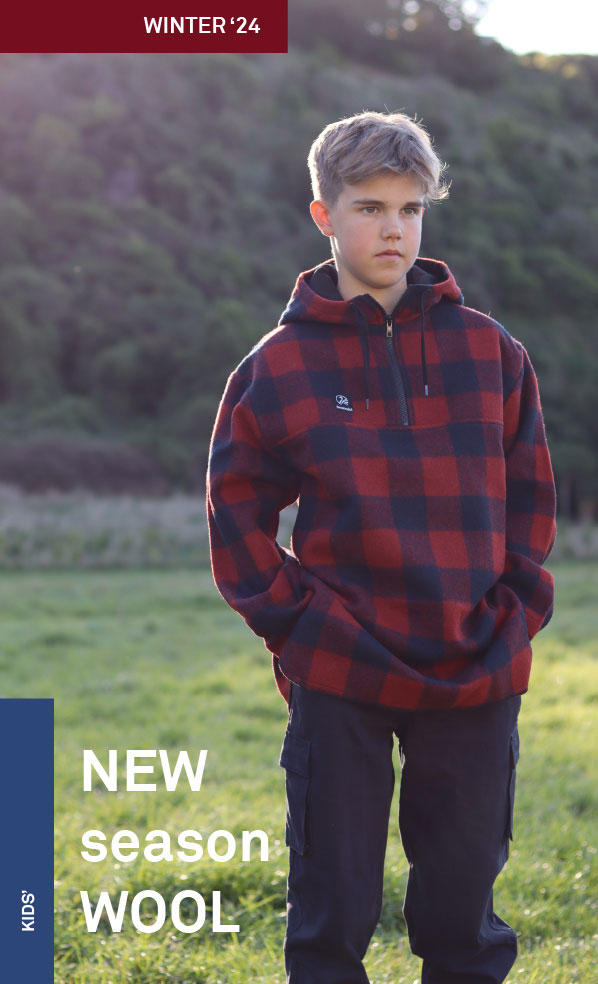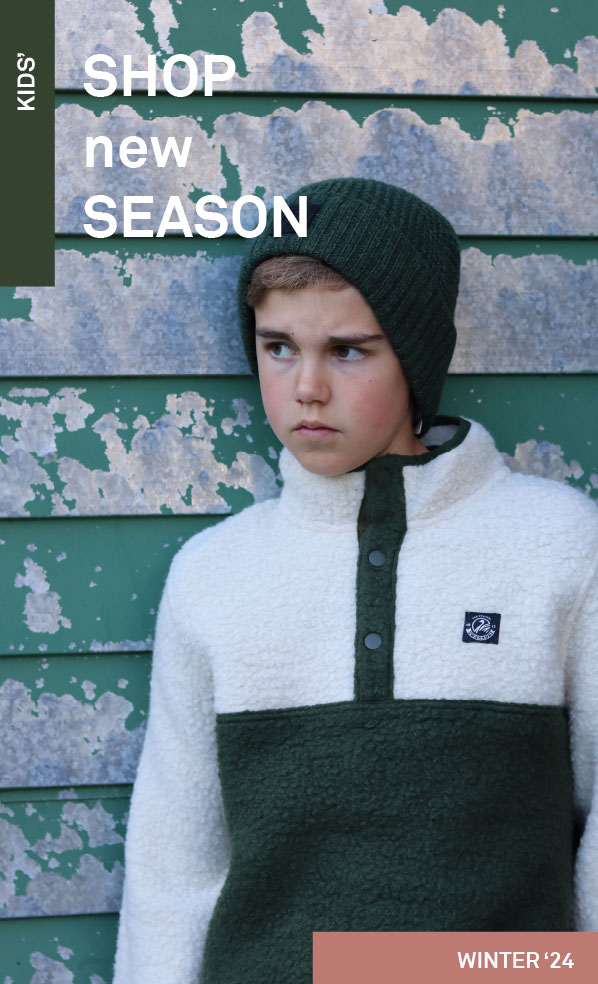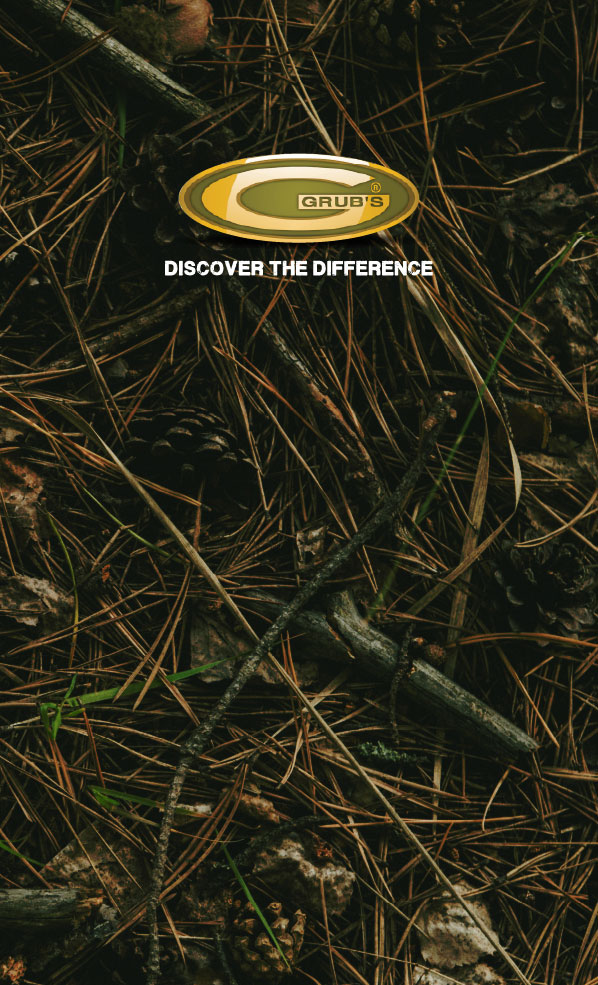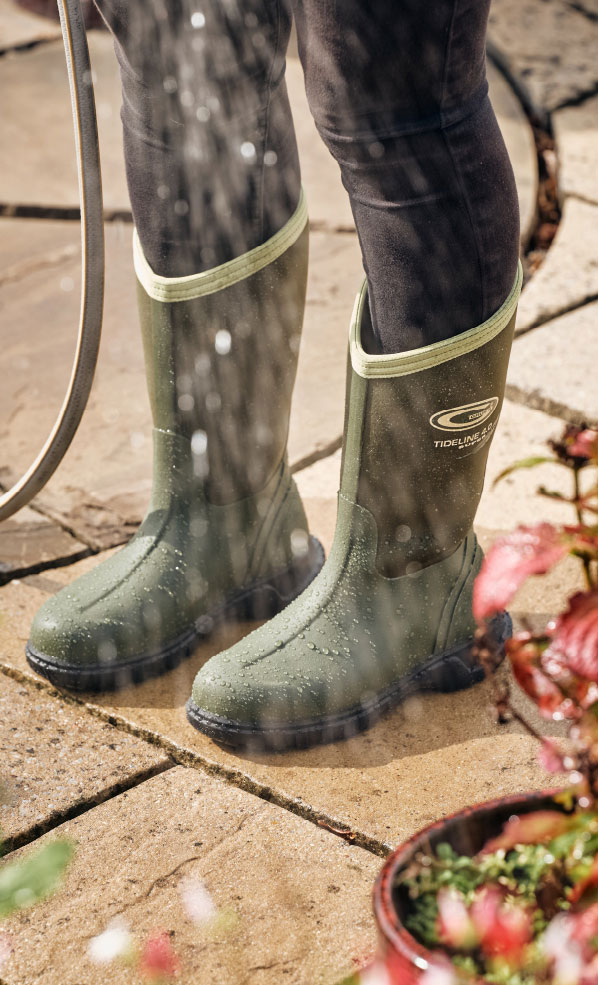 By
Swanndri NZ
By
Swanndri NZ
Back to Basics, Back to Nature
- January 17, 2023
Here at Swanndri, we’re on a journey to embed sustainability into more aspects of our business. Part of this, of course, means thinking about the life cycle of our products.
So, what happens to a Swanndri once you’ve worn it in and worn it out? When it’s done its dash as a dog blanket or a doormat? When it’s been handed down over the decades but it’s finally time to let it go?
The core ingredient of a classic Swanny is wool – a natural fibre, grown from the land. So it makes sense that it returns to the land, right? That’s why we decided to bury a Swanndri. To show how this natural fibre, wool, can be so hard wearing and long lasting while it’s on your back, but when the time comes, it can be returned to the earth and will break down naturally, leaving no trace.

To help make this project happen (properly), we enlisted the help of an expert: Emma Wilding.
Emma is a Farm Innovation Project Manager at The New Zealand Merino Company, an organization focused on sourcing ethical and regenerative wool through their ZQ and ZQRX programs – both of which Swanndri is a partner. These programs uphold the highest standard of wool sourcing in the world.
Emma’s role is all about working with farmers to add value to their businesses – and the brands they supply – through sustainable, ethical and regenerative practices. Basically, she helps businesses that want to do good things with wool and who choose a journey of continuous improvement. And that’s why she was the perfect person to help us with our bury a Swanndri experiment – or “biodegradation study”, to use Emma’s more technical description.

First, we found a nice spot up on the hill at The Wandle, a farm in Middlemarch, Central Otago – a Swanndri supplier, ZQ certified and members of the ZQRX program. The co-manager of the farm, Tara, kindly gifted us an old Swanndri of hers that was about ready to retire, which we cut into four pieces – three to be buried on farm and the fourth to be taken away and buried close to home as an indicator piece to monitor progress. We placed the three pieces at The Wandle in between some wire mesh (to make it easier to dig up and find later on) and buried them in the topsoil.
Now? We wait. Emma reckons we’ll start to see some decomposition in six to twelve months, but it might take 18 months for it to break down completely. As Emma points out though, it’s not just about how fast wool breaks down. “It’s about showing how wool can be a force for good.”
“Because when you buy a woollen garment from Swanndri, you’re not just buying a piece of clothing that’s completely biodegradable, you’re supporting farms that are regenerating the land and their sustainable supply chain – you’re supporting a whole circular ecosystem.”
Hopefully, this experiment will help illustrate how a piece of clothing can be both durable and sustainable – thanks to wool. Highlighting how, when we’re looking for ways to change and adapt to be more sustainable – we should look for answers not in ‘modern’ synthetic materials, but in nature itself.
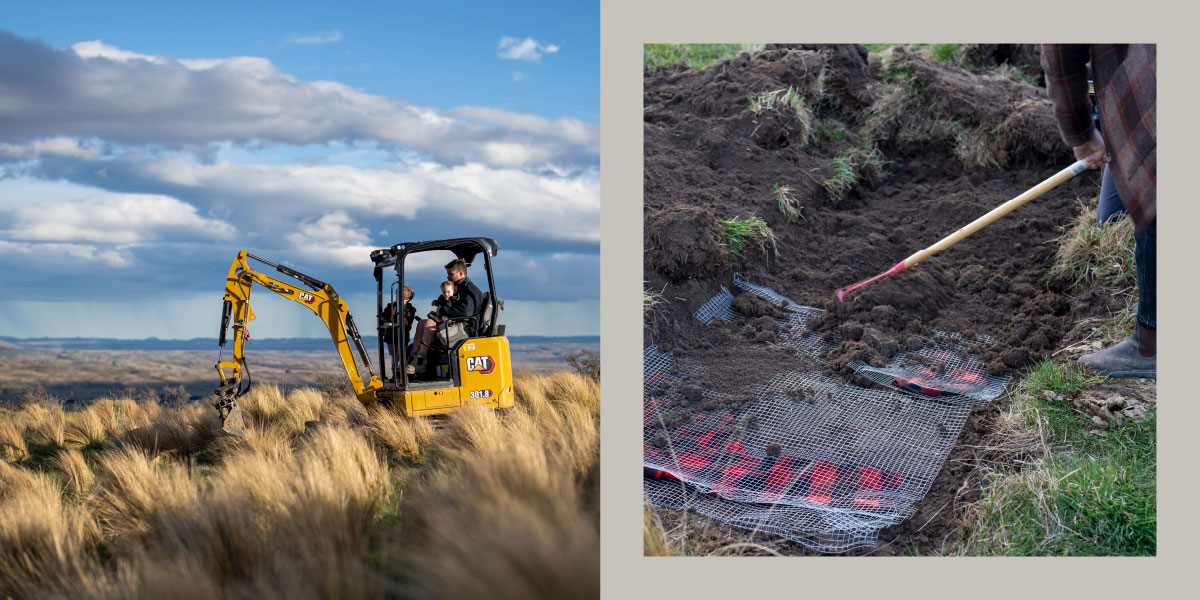
As Emma points out, “Plastics have only really been around for 80 years. And they have completely changed the way we live – often not for the better. Whereas wool’s been around for thousands. And remains unchanged.”
“Wool is back to basics. Back to nature. Back to what’s best for all of us – for you, for the animals, and for our planet.”
 Men
Men Women
Women Kids
Kids Accessories
Accessories Boots
Boots


